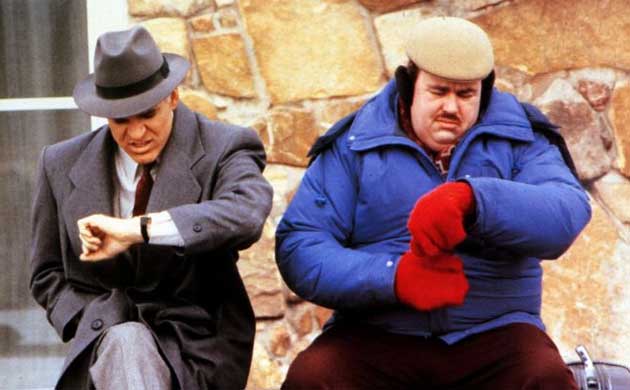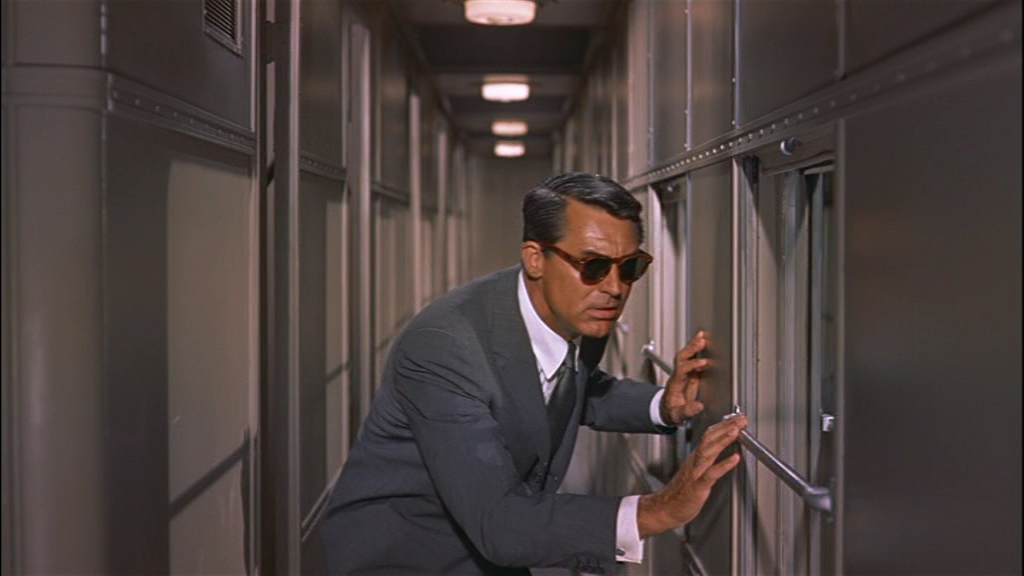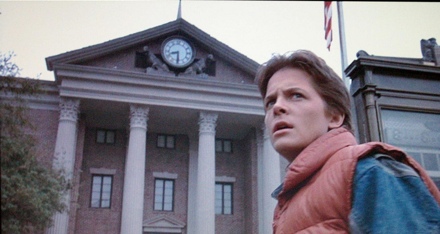
Steve Martin and John Candy in "Planes, Trains and Automobiles," which you need to see again.
Christian Marclay’s The Clock (now on show at White Cube, Mason’s Yard) is a twenty-four hour long film which, unlike other very long art films like Douglas Gordon’s Twenty-Four Hour Psycho, or Andy Warhol’s Empire, you might actually want to watch for more than ten minutes. This is one of Marclay’s great achievements as an artist: as with his work using avant-garde music and experimental DJ-ing, he takes something often associated with arid pretension and makes it not only interesting but actually fun. His work Video Quartet – four screens playing snippets from films simultaneously, each showing musical performances, sliced together to create a piece of odd, compelling sound/visual art – was for some time one of the most visited pieces in Tate Modern until, for some unknown reason, they decided to take it down. Maybe they should buy The Clock instead, unless there’s some budget cuts occurring at the moment that I haven’t been told about.
Like Video Quartet, The Clock is a collage of found cinematic passages. In every clip of which The Clock consists (some a few seconds, some about a minute), there’s a clock or watch driving the narrative forward. Clocks are there to remind the characters that there’s a story to be told and a limited amount of time in which to tell it. Cary Grant scampers past a Grand Central clock on the way to his escape by train in North by Northwest; Steve Martin hustles through the airport crowds in Planes, Trains and Automobiles, finding he’s too late for his flight (with hilarious consequences!). Pocket watches are flipped open, gawped at. Time is running out, there’s no time to waste; the audience are checking their own watches impatiently: get a move on, let’s get this rubbish date over with.

Cary Grant in impenetrable disguise in "North by Northwest"
Slowly, correspondences appear between the clips. A bang in one clip makes a character turn in another. Crowds seem to flow from the 80s to the 90s to the 30s. Melodramatic performances in one clip raise a reactive smirk in the next. The knowingness is fabricated in Marclay’s editing, of course, but it’s there in the films themselves, too: just see the amazing tennis scene in Strangers on a Train, which delays and draws out audience suspense to such an extent that it’s almost excruciating to watch (and not in an Inception way, either). The clips are a reminder of clocks as narrative motors – the paradigmatic MacGuffins, making Hitchcock’s prevalence in the work a kind of homage – but also as self-conscious nods to the audience. To go to the cinema (and Marclay’s art is explicitly cinematic, dependent upon aural and visual separation from the outside world, rather than, say, televisual, with its intimate relationship with the everyday) is to wilfully separate oneself from ordinary time – to witness the stability of ordinary time funnel open into cinematic time. Cinematic time is what makes it possible for a cab to be available whenever and wherever you need it, for the money you thrust unthinkingly at the cab driver to be exactly right, for the train to be about to pull out when you hurtle into the station, just making it (or not, depending on the kind of film you’re watching). In The Clock, that funnelled relationship between real and cinematic time is equalized and rendered proportionate. Every clip is (beautifully) timed to the actual time the film is being shown, so it’s 5:15 for you, the audience and for, say, Kurt Russell.
![Alfred_Hitchcock's_Strangers_on_a_Train_Trailer_Tennis_Walker[1]](https://magazine.art21.org/wp-content/uploads/2010/10/Alfred_Hitchcocks_Strangers_on_a_Train_Trailer_Tennis_Walker1.png)
Robert Walker not watching tennis in "Strangers on a Train"
Marclay’s alignment of real and cinematic time in The Clock makes the work itself a kind of timepiece. You know how long you have until the gallery attendants kick you out (kindly). In that way, the work records the process of its being watched, and feeds back, if obliquely, to the phenomenological self-consciousness of minimalist sculpture – only here, you’re made aware of your existence in time rather than space. You are here, watching a film, at this precise time. It’s a strange jolt. But this philosophical element is, as in Marclay’s best work, so obviously a locked-in component of the work that it barely needs transcription into dry-as-dust academicisms. The temporal structure of The Clock means that what you’re witnessing is a reality that follows the same rhythm as your own. The reality of the work of art is yours too. That’s all it is, and that’s everything.

MJF knows what time it is (about half eight)




Pingback: Friday Links: For a tension-filled time | Stephanie Vegh
Pingback: Letter from London: Gutter Rug | Art21 Blog
Pingback: VeniceЯUs | Art21 Blog
Pingback: Venice and Us | Your Pure Art
Pingback: Venice Bienalle 2011 in Pics | Your Pure Art
Pingback: Venice Bienalle 2011 in Pics | Your Pure Art